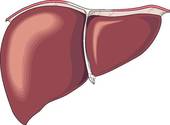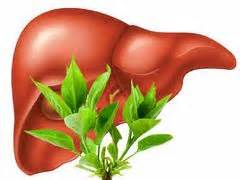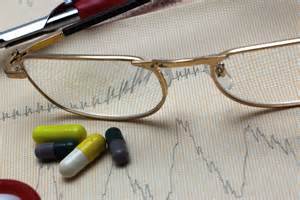How Liver Works

|
Voltaire |
When it comes to maintaining good health, as well as fighting and warding off disease and illness, no organ is more important to us than the liver - the body's toxic disposal plant. Liver is the foundation of your body’s ability to detoxify. It is the largest solid organ in your body, weighing on average about 3.5 pounds. The liver is located just below the diaphragm (the muscular membrane separating the chest from the abdomen), primarily in the upper right part of the abdomen, mostly under the ribs. However, it also extends across the middle of the upper abdomen and part way into the left upper abdomen. An irregularly shaped, dome-like solid structure, the liver consists of two main parts (a larger right lobe and a smaller left lobe) and two minor lobes. The upper border of the right lobe is at the level of the top of the 5th rib (a little less than 1/2 inch below the nipple), and the upper border of the left lobe is just below the 5th rib (about 3/4 inch below the nipple). During inspiration (breathing in), the liver is pushed down by the diaphragm and the lower edge of the liver descends below the margin of the lowest rib (costal margin).
People may not know that the liver is also the largest gland in the body. The liver is actually two different types of gland. It is a secretory gland because it has a specialized structure that is designed to allow it to make and secrete bile into the bile ducts. It also is an endocrine gland since it makes and secretes chemicals directly into the blood that have effects on other organs in the body.
The liver is appropriately situated in the body to directly receive the blood that comes from the intestines (portal blood). With this arrangement, the liver can readily process (metabolize) nutrients absorbed from food as well as other contents of the portal blood. Indeed, because of its numerous biochemical functions, the liver is considered the biochemical factory of the body.

The liver is organized strategically to coordinate its structure, including its blood circulation, with its functions. Four key features of this organization of the liver are as follows:
- 1. The basic unit of the liver is called an acinus. In each acinus, the liver cells (hepatocytes) are grouped into three zones that are anatomically related to the liver's blood supply and drainage. Thus, the blood enters zone one first, and then travels through the second and third zones before leaving the liver. Each zone has its own special functions to perform.
- 2. Specialized areas of the walls of adjacent liver cells (hepatocytes) join to form bile canaliculi. The canaliculi are microscopic tubes that transport bile that is produced by the liver cells (hepatocytes). Then, meeting with other canaliculi, they ultimately empty into tiny bile ducts. These bile ducts join with other bile ducts to form larger bile ducts that ultimately leave the liver.
- 3. The liver has a unique, dual blood supply. One comes from the portal vein, as already mentioned, and the other from the hepatic artery. The hepatic artery brings to the liver oxygenated blood that comes from the lungs, heart, and branches of the aortic artery. So, finally, tiny branches of the portal vein and hepatic artery travel in the liver together with the tiny bile ducts in tracts called portal tracts.
- 4. The hepatic artery supplies blood to nourish the bile ducts and the liver cells (hepatocytes). This blood joins with the portal vein blood in tiny blood vessels called sinusoids. Now, these sinusoids are situated on each side of single-cell-thick plates of liver cells (hepatocytes), and they have an exceptionally porous lining (epithelium). This unique arrangement enables passage of even large molecules (for example, lipoproteins) through the sinusoidal lining to and from the liver cells (hepatocytes). The blood travels in the sinusoids through the three acinar zones. Finally, the blood is drained from the liver by the hepatic veins and then heads back to the heart and lungs.











